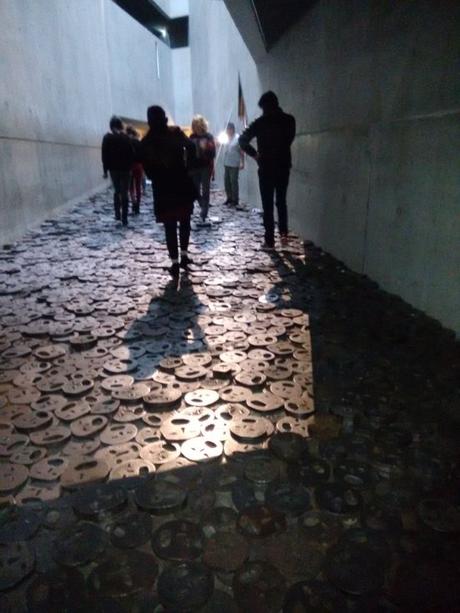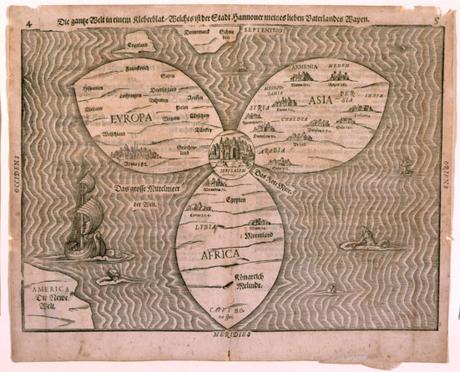The Jewish Museum Berlin is a disorientating place. It is made up of various buildings from different periods, most recently The Libeskind building.
Architect Daniel Libeskind created his design around a series of intersecting voids and straight and zigzagging lines. Corridors veer off at angles, and lights, mirrors and installations constantly make you aware of the strangeness of the space.

Shalekhet, Fallen Leaves, Menashe Kadishman, Jewish Museum, Berlin
" data-orig-size="2448,3264" g="" sizes="(max-width: 551px) 100vw, 551px" data-image-title="IMG_20180106_122026" data-orig-file="https://englishmaninberlin.files.wordpress.com/2018/01/img_20180106_122026.jpg?w=551" />Shalekhet (Fallen Leaves) by Menashe Kadishman, Jewish Museum Berlin
One of my favourite installations in this are is Shalekhet (Fallen Leaves) by Menashe Kadishman. You hear it before you see it, a distinct clinking reminiscent of chains or shackles. The work consists of over 10,000 screaming faces cut from iron plates, which you walk over as you approach a dark void. It is a disturbing refection of victims of war.
Adding another layer to the confusion of space is the newly opened “Welcome to Jerusalem” exhibition in the old building. The exhibition transports you through the history, sights and sounds of the city in over 15 rooms. One room, dedicated to maps, displays The Whole World in a Clover Leaf by Heinrich Bünting, showing Jerusalem as the centre of the world. Disorientating again, from a geographical point of view, but accurate from a historical, religious and political point of view.

The Whole World in a Clover Leaf, Heinrich Bünting, Magdeburg, 1600, Woodcut, Jewish Museum Berlin, Welcome to Jerusalem
" data-orig-size="1896,1535" sizes="(max-width: 551px) 100vw, 551px" data-image-title="karte-jerusalem-kleberblat-pressedownload" data-orig-file="https://englishmaninberlin.files.wordpress.com/2018/01/karte-jerusalem-kleberblat-pressedownload.jpg?w=551" aperture="aperture" />The Whole World in a Clover Leaf by Heinrich Bünting, Magdeburg, 1600, Woodcut © Jewish Museum Berlin, purchased with funds provided by Stiftung DKLB, photo: Jens Ziehe
The exhibition successfully shows the changing landscape of Jerusalem, from 5000 years ago to the present day, where old and new constantly overlap and collide. The exhibition is full of interesting insights and facts, for example, that the keys to one of the holiest sites in Christianity, The Church of the Holy Sepulchre, are held by two Muslim families, or that Muslims once faced towards Jerusalem to pray, before this was changed to Mecca, or that when the Jewish temple was destroyed, Judaism fundamentally changed to focus on the study of holy texts. In addition to all this, the exhibition provides you with a good understanding of the current conflicts that occupy the city today.
So, if you’re getting tired of the grey Berlin winter, take a trip to the Jewish Museum to be transported through time and space.
Welcome to Jerusalem is on at the Jewish Museum Berlin (Lindenstraße 9-14, 10969 Berlin) until 30 April 2019.
Advertisements &b; &b;